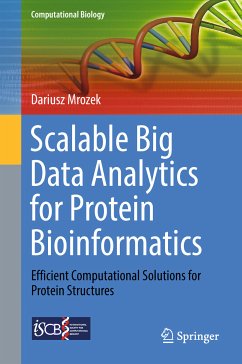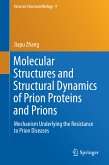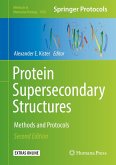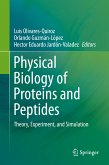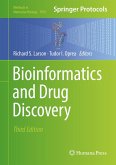This book presents a focus on proteins and their structures. The text describes various scalable solutions for protein structure similarity searching, carried out at main representation levels and for prediction of 3D structures of proteins. Emphasis is placed on techniques that can be used to accelerate similarity searches and protein structure modeling processes.
The content of the book is divided into four parts. The first part provides background information on proteins and their representation levels, including a formal model of a 3D protein structure used in computational processes, and a brief overview of the technologies used in the solutions presented in the book. The second part of the book discusses Cloud services that are utilized in the development of scalable and reliable cloud applications for 3D protein structure similarity searching and protein structure prediction. The third part of the book shows the utilization of scalable Big Datacomputational frameworks, like Hadoop and Spark, in massive 3D protein structure alignments and identification of intrinsically disordered regions in protein structures. The fourth part of the book focuses on finding 3D protein structure similarities, accelerated with the use of GPUs and the use of multithreading and relational databases for efficient approximate searching on protein secondary structures.
The book introduces advanced techniques and computational architectures that benefit from recent achievements in the field of computing and parallelism. Recent developments in computer science have allowed algorithms previously considered too time-consuming to now be efficiently used for applications in bioinformatics and the life sciences. Given its depth of coverage, the book will be of interest to researchers and software developers working in the fields of structural bioinformatics and biomedical databases.
Dieser Download kann aus rechtlichen Gründen nur mit Rechnungsadresse in A, B, BG, CY, CZ, D, DK, EW, E, FIN, F, GR, HR, H, IRL, I, LT, L, LR, M, NL, PL, P, R, S, SLO, SK ausgeliefert werden.
Hinweis: Dieser Artikel kann nur an eine deutsche Lieferadresse ausgeliefert werden.
"In this book, the author deals with various techniques that can be used for data handling and efficient analysis related to computational processes that require a great deal of time and effort, for example, structure similarity searching, protein structure modeling, protein structure alignment, and superposition." (Jasbir Kaur, zbMath 1411.92002, 2019)
"This excellent and practically oriented text can benefit researchers seeking to establish a cloud-based bioinformatics HPC facility. Note that most of the solutions are implemented as embarrassingly parallel processes and not as distributed parallel processes. The book will be of interest to researchers and scientific software developers of bioinformatics and biomedical databases." (Alexander Tzanov, Computing Reviews, June 06, 2019)
"This excellent and practically oriented text can benefit researchers seeking to establish a cloud-based bioinformatics HPC facility. Note that most of the solutions are implemented as embarrassingly parallel processes and not as distributed parallel processes. The book will be of interest to researchers and scientific software developers of bioinformatics and biomedical databases." (Alexander Tzanov, Computing Reviews, June 06, 2019)
Es gelten unsere Allgemeinen Geschäftsbedingungen: www.buecher.de/agb
Impressum
www.buecher.de ist ein Internetauftritt der buecher.de internetstores GmbH
Geschäftsführung: Monica Sawhney | Roland Kölbl | Günter Hilger
Sitz der Gesellschaft: Batheyer Straße 115 - 117, 58099 Hagen
Postanschrift: Bürgermeister-Wegele-Str. 12, 86167 Augsburg
Amtsgericht Hagen HRB 13257
Steuernummer: 321/5800/1497
USt-IdNr: DE450055826
Bitte wählen Sie Ihr Anliegen aus.
Rechnungen
Retourenschein anfordern
Bestellstatus
Storno

